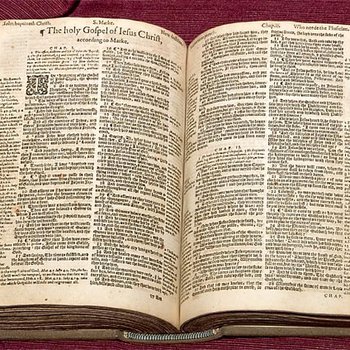Challenges
During the reign of King Henry VIII in England, the religious landscape changed. Since the Catholic Church would not grant him a divorce from his wife, he renounced the church and set up his own, which became known as the Anglican Church or the Church of England. He set himself up as its Pope, and chose to defy the wishes of Rome by funding the printing of the Bible in English. What would become known as the Great Bible, first published in 1539, became the first English Bible authorized for public use. The clergy were encouraged to read this Bible to their people. The new translation was known as the Great Bible because of its size - a large pulpit folio. Unfortunately, Queen Mary, or “Bloody Mary,” came to the throne in the 1550s. She wanted to return England to the Roman Catholic Church, and thus it again became illegal to print English Bibles. Hundreds of Protestants lost their lives and many fled to Europe, a number ending up in Geneva, Switzerland. Those in the Church at Geneva determined to produce an English Bible to educate their families while they continued in exile. The completed translation, first published in 1560, became known as the Geneva Bible. Although never officially adopted in England, the Geneva Bible was the most popular of all English versions, 140 editions being published between 1560 and 1640. Because it was the Bible of the English Protestant Reformation, it was brought to America with the early settlers, including the Pilgrims and the Puritans. There are two important characteristics of this new Bible, one being the use of interpretative notes in the margins, representing the views of John Calvin and the protestant reformers, and the other being the numbering of verses for the first time in each of the chapters, contributing to ease of use of the Scriptures.


